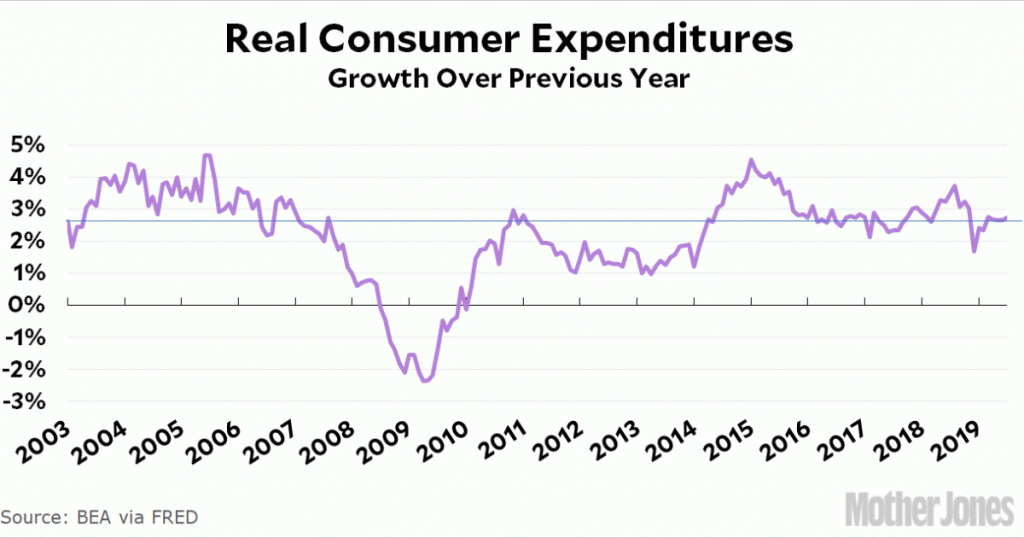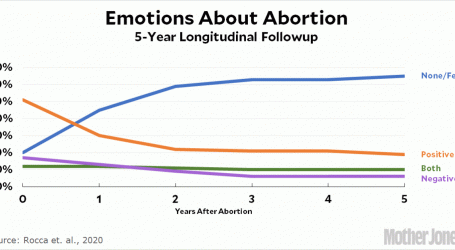Consumer Spending Is Kind of Meh
The Wall Street Journal doubled down today on the notion that consumer spending is strong:
U.S. households ramped up their spending in July, providing reassurance that the economy’s decadelong expansion continued to roll despite slowing factory activity and global growth. Personal-consumption expenditures, a measure of household spending, increased a seasonally adjusted 0.6% in July from June, a pickup from the previous two months, the Commerce Department said Friday, continuing a solid performance by the economy’s main driving force.
First of all, this isn’t adjusted for inflation, even though real numbers are released at the same time as nominal numbers. Second, take a look at monthly growth in consumer spending over the past couple of decades:
It’s all noise. There’s no way to pull any useful information out of this. If, instead, you compare year-over-year growth—which makes more sense in the first place—you get this:
There’s still some noise, but there’s also a clear signal: consumer spending grew in July at about the rate as June and May and April and March. It’s actually a little below the average of the past couple of years.
I should note that this works in both directions. If you look at personal income, it didn’t increase at all between June and July. It was completely flat. Bad news! But if you look at year-over-year growth, things look a little different:
Income growth has been showing some decleration over the past year, but it’s still pretty positive.
I know this stuff seems kind of tedious, but it matters if you really want to know the state of the economy. The Journal summary of July is that consumer spending was strong but income growth was weak. In reality, they were both fairly average.





